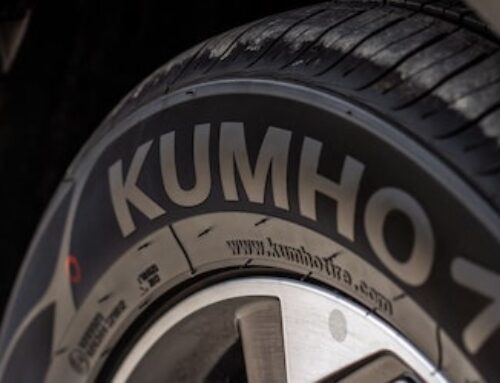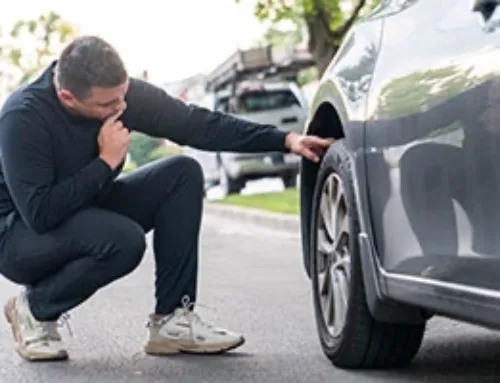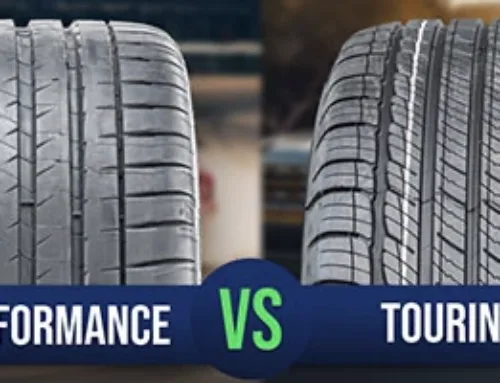Table of Contents
If you know how to change a tire, finding yourself with a flat at the most inappropriate moment won’t be frustrating anymore. Learn the best flat tire replacement tips from our GoTire technician.
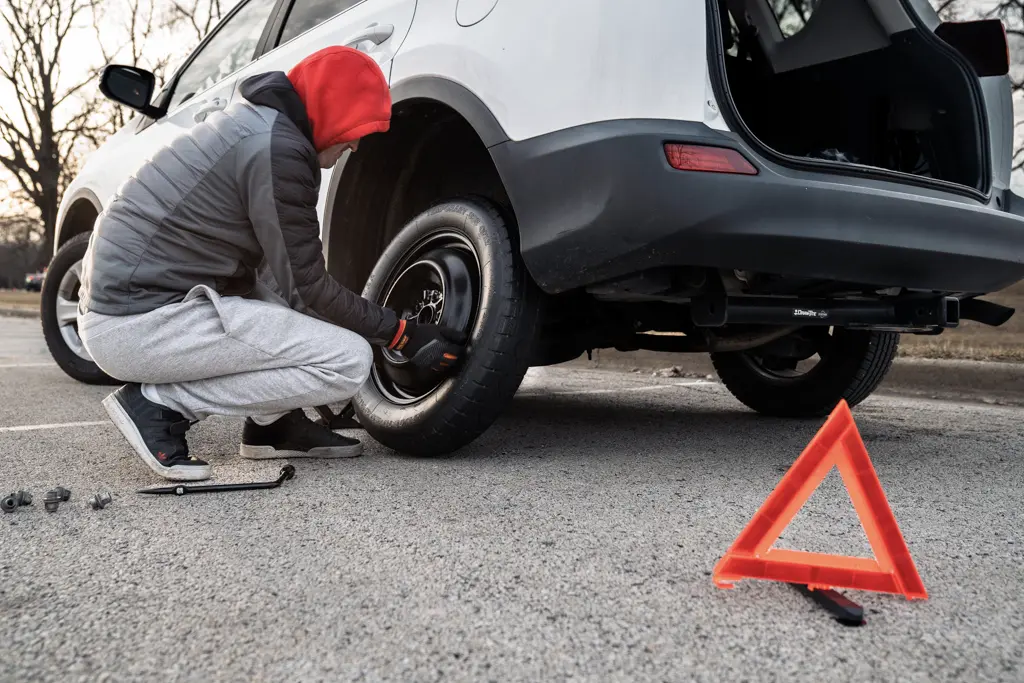
Change a flat tire like a pro: where to begin?
Begin with reading this “Change a flat tire” guide! No, really, the first step would be getting well-informed and well-equipped. Flat tires aren’t as scary as they sound, and anyone can perform a changeover. But.
Make sure you are properly equipped
Here is the list of essential equipment for the flat tire replacement.
1. A spare tire
Keep it in your trunk at all times. Regularly, at least once a month, check your tires’ air pressure, including the spare tire! Especially if you’re planning to travel long distances or carry extra loads. But it won’t hurt to look at the tires’ condition each time you’re about to drive. Correct tire pressure is an essential component of our safety on the road, and by maintaining it, you will prevent the disappointment of an unexpected flat or even an accident.
When at the gas station, spare a few minutes to check your tire pressure and add air if needed. Your car’s manufacturer-recommended PSI can be found on a little sticker inside the driver’s door. Usually, it’s between 32 psi and 35 psi.
2. A car jack
Comes with your car’s standard equipment. Go and check if it’s still in your trunk, and if not, get a new one! It’s impossible to change a flat tire without jacking up the car.
3. Lug wrench (aka tire iron)
An essential tool when it comes to flat tires. It’s a socket wrench used to tighten or loosen the lug nuts. Lug wrenches are usually L- or X-shaped. Most vehicles are equipped with an L-shape, one with a socket wrench on the bent end and a prying tip — on the other. It is used for a hub cap or wheel cover removal.
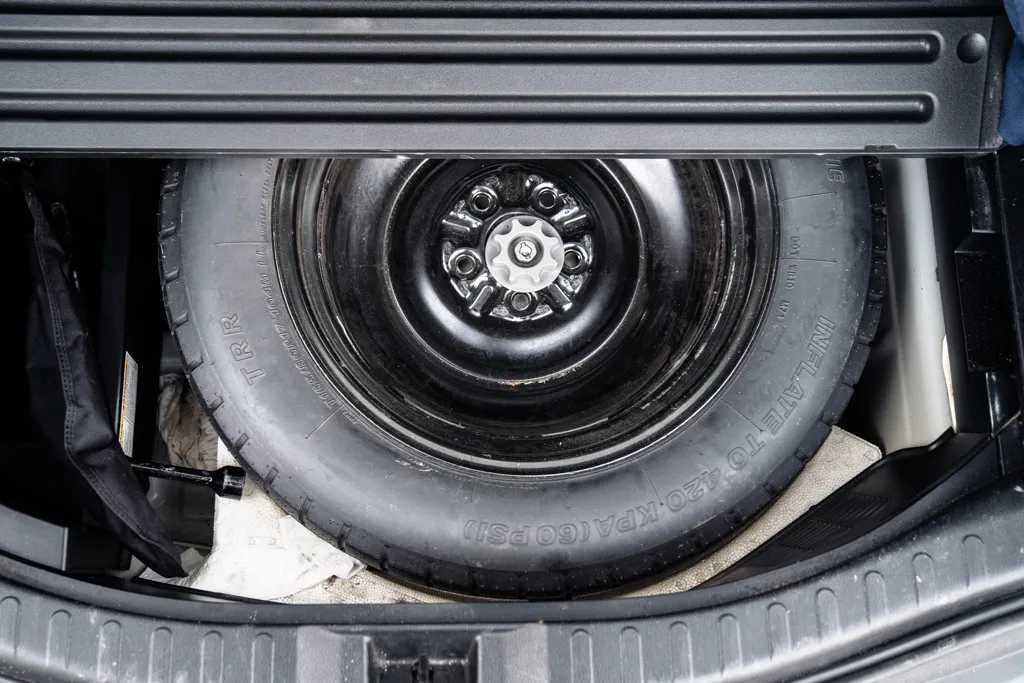
4. Vehicle owner’s manual
Don’t underestimate the power of a car owner’s manual that you store in the glove box. This little book can contain vital information on a flat tire replacement specifically for the model of your vehicle. If you don’t have it, order or download it online now!
5. Flashlight
If you need to install a spare tire at night, your phone is not the best option. It can run out of power, and you will need both hands when replacing a flat tire. We recommend owning an ultra-bright LED flashlight with a hands-free option (like a collapsible pivoting stand). Stanley makes suitable flashlights for the car tire replacement process. Make sure that it’s fully charged.
6. Wheel wedges
Wheel wedges will prevent a vehicle from rolling. Place a wedge before the rear tires if you’re changing the front ones, and vice-versa.
7. Woodcut
A woodcut of about 2×6 inches, placed under a car jack, will help its sturdiness when lifting the vehicle.
8. Hazard triangles
It is crucial to make your vehicle as visible as possible. Inform the participants of traffic about your flat tire by placing hazard triangles (or other warning devices) in front and behind your vehicle.

Don’t let the best tire deals & tips roll by!
Sign up for our newsletter
And don’t forget about these essentials when you change a flat tire
And it doesn’t matter if it sounds a bit OCD! Besides the essential tools and regular tire maintenance, you need to keep some extras in your car for a stress-free replacement tire installation.
Early morning. Looking sharp as Bond (or Bond girl), you’ve filled your tumbler with coffee, started the car, turned your favorite tune on, and taken off from your picturesque suburban residence. You’re in a good mood, driving and practicing your pitch for the new investors at today’s meeting. Suddenly you start hearing a disturbing “Rhhummmh” and feel a suspicious wobble. A flat. You are far from the office, and getting help is unlikely. A spare tire must be installed. And this is when you will thank yourself for keeping these extra essentials in your car.
- An extra set of clothes
- Gloves
- A raincoat
- A tire-changing mat/a blanket
- Wet tissues.
Now you are ready to change a flat tire.
How to change a tire: 20 steps
Step 1. Park your car in a safe, wide-enough space, away from the oncoming traffic.
Realized you’ve got a flat tire? Don’t panic! Slowly reduce your speed, don’t slam on the brakes, and observe the surroundings for a safe location to pull over for a tire change. A service station would be ideal, but we must deal with what we’ve got. Never attempt to install a spare tire on a narrow road shoulder or close to the oncoming traffic!
The flatter and quieter the spot is, the better. If you can slowly drive your car off the road, ideally to the parking lot, that would be the best. Set your car on a parking brake. Refer to your vehicle owner’s manual for specific recommendations.
Step 2. Switch the hazard lights on: let the traffic participants know that you’ve got a flat tire
Safety first. If you’re moving your car to the road shoulder, turn the hazard lights on right away. Other drivers have to know about your maneuver.
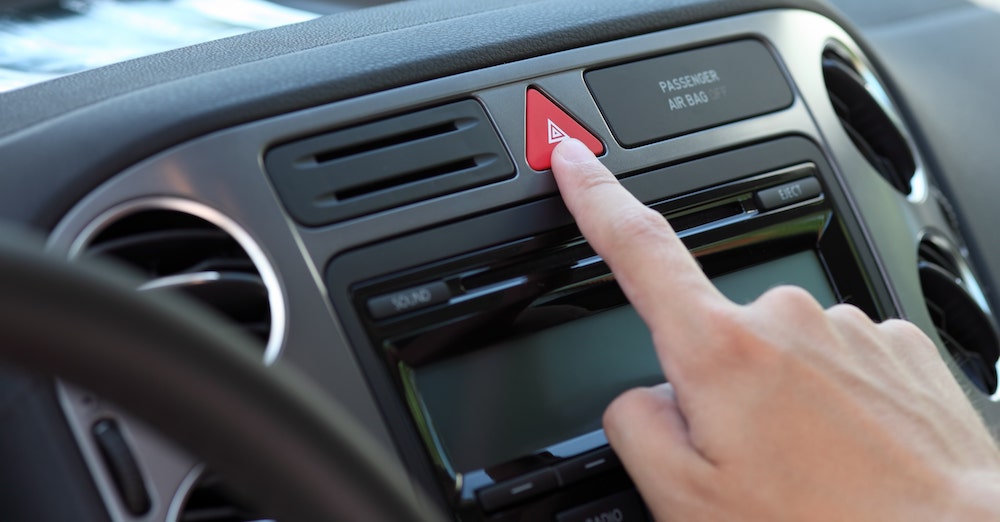
Step 3. Make sure your car is on a parking brake
Once you’re parked, apply the parking brake. Make sure your car is securely parked and as visible as possible.
Step 4. Place warning triangles in front and behind your vehicle
The ideal way to place three safety triangles “diagonally” to the rear of your car: one 10 feet right behind your vehicle, closer to the side of the road, one 100 feet behind it, in the middle of a lane or a shoulder, and the third one closer to the edge of the lane, about 200 feet behind the car. But you must adjust to the road situation and place the warning signs in the best way to make your car as visible as possible.
Step 5. Place wheel edges to the opposite tires from a flat
Wheel edges prevent your car from rolling. If replacing a rear tire, secure the wheel edges at the front tires and the other way around. A large stone or a brick will do the work, just make sure your car is stable on the road.
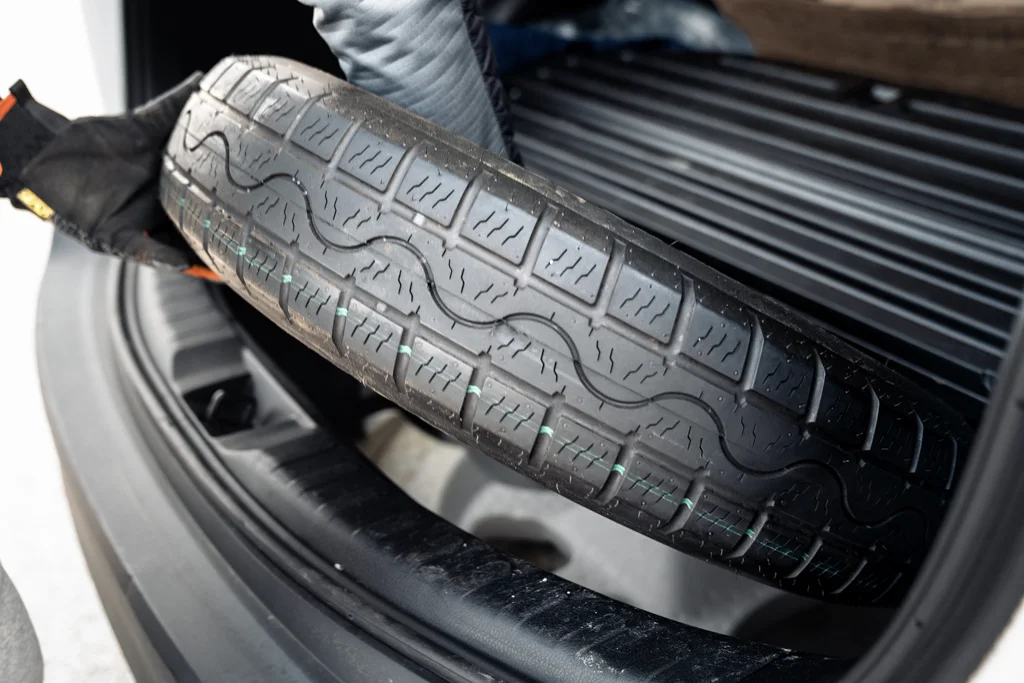
Step 6. Get your spare tire out
Check that the spare tire is clean, free from rust, and ready to be mounted. Place it on the blanket.
Step 7. Get the tools ready
Ensure you have the essential tools: the car jack and the lug wrench. Get them ready. Prepare the working space.
Step 8. Double-check the spare tire installation instruction in your owner’s manual
Make sure you don’t need any special tools.
Step 9. Change your clothes and/or put gloves on
If a flat tire has caught you in the middle of something important and you must look sharp, change your clothes. If you don’t want to be bothered, just put gloves on. If you don’t want to be bothered with them either, skip to the text step.
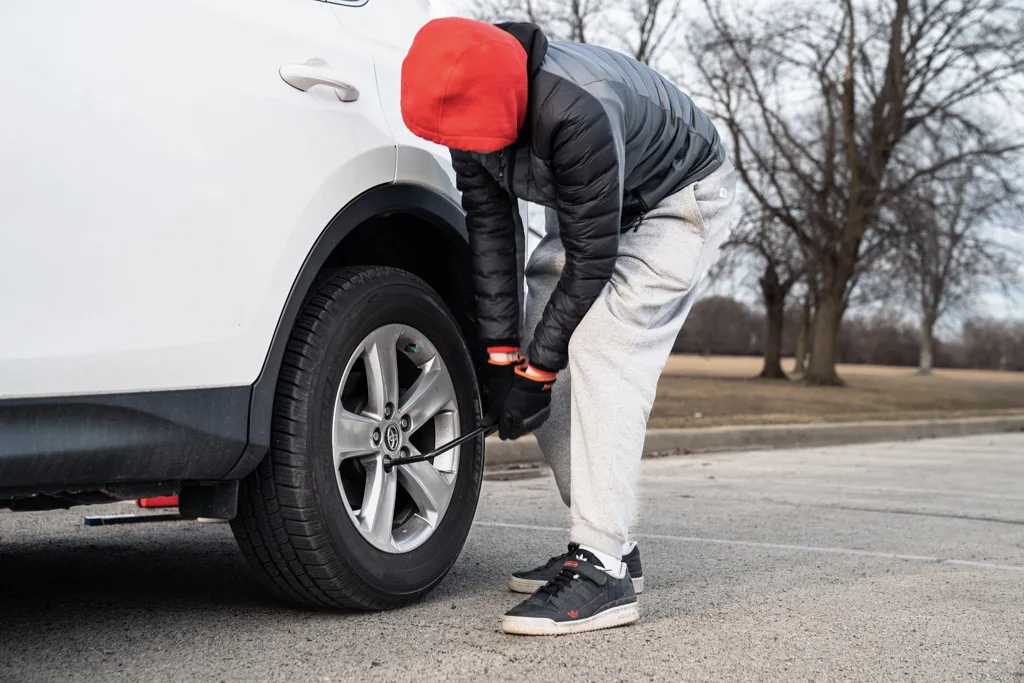
Step 10. Remove the wheel cover (the hub cap)
If the lug nuts are covered with the hub caps, remove them. It is easier to do this before your vehicle has been jacked up. The flat end of a lug wrench will help you pry the wheel covers off. If the lug nuts are exposed, skip ahead to the next step.
Step 11. Loosen the lug nuts (but don’t take them off)
Use the lug wrench to loosen the lug nuts by rotating it counter clock-wise. It might require extra power, so feel free to use your weight. They need to stay on to a half- or one-fourth of a turn. Just loosen, but don’t remove the lug nuts!
Step 12. Place the jack under your vehicle
Refer to the car owner’s manual to know the exact location of the jacking points. Usually, they are located on the vehicle’s frame, under the rocker panels behind the front wheels, and right in front of the rear wheels. Locate the car jack next to a flat tire. Make sure it is positioned sturdily.
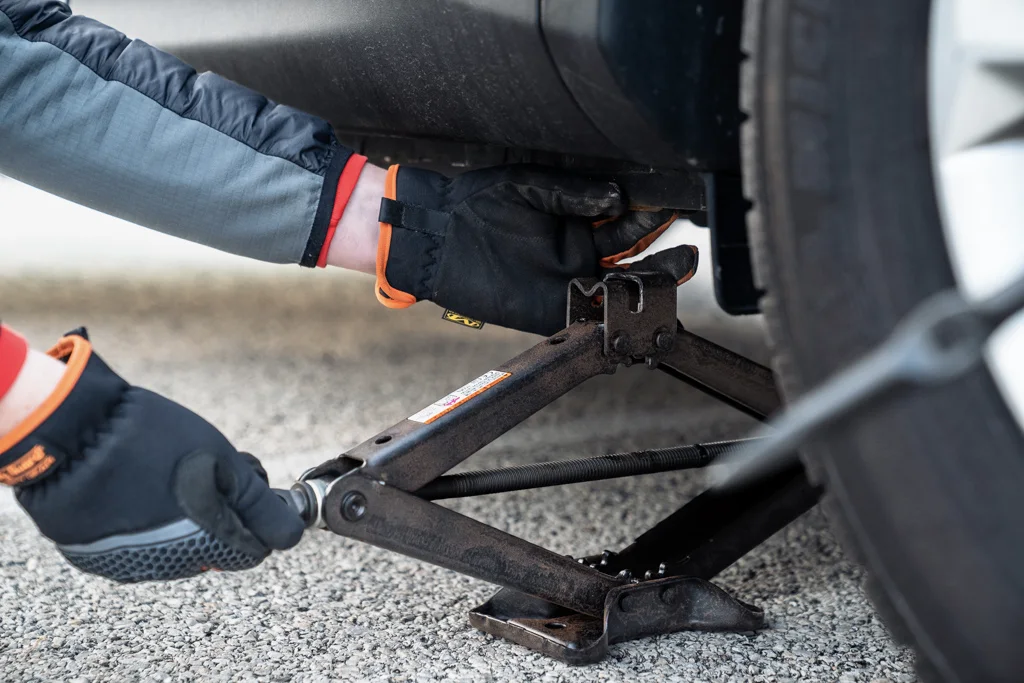
Step 13. Place a woodcut under the car jack
Before raising the vehicle, make sure the jack is sturdy by placing a woodcut under it.
Step 14. Raise the vehicle with a jack
Begin raising the vehicle with a jack until your flat is about 6 inches above the ground. You must get enough clearance to remove the flat tire. Be very careful! Keep away from the car, and make sure that your feet and hands aren’t under it (both in the process and after lifting the car)!
Step 15. Unscrew the lug nuts
You’ve already loosened the lug nuts, and now it’s time to remove them. You can do it will bare hands.
Step 16. Remove the flat tire
Carefully remove the flat from the wheel hub by pulling it towards you.
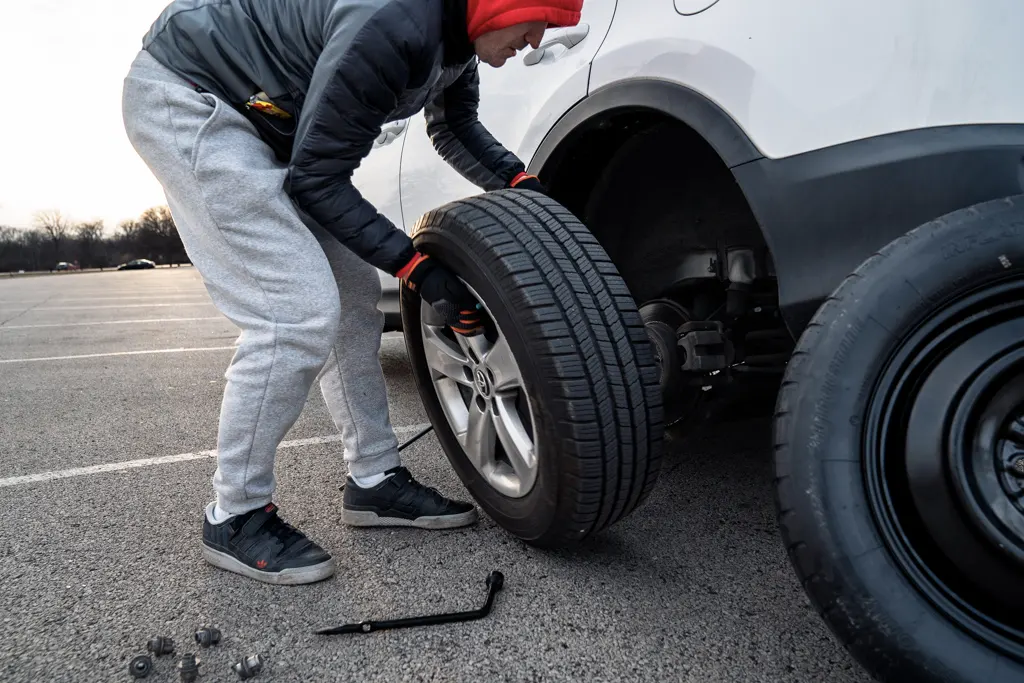
Step 17. Place the spare tire on
Place the spare tire towards the wheel hub and align the lug bolts and the rim. Push until the lug bolts come through the rim.
Step 18. Tighten the lug nuts and mount the spare tire
Combine the lug nuts and the lug bolts, and, as you’d usually do, screw them by hand. Do not use the lug wrench yet! Hand tighten the lug bolts in a star-shaped pattern or a cross pattern, one on each side at a time.
Step 19. Lower the vehicle, but not fully back yet
Lower your vehicle with a jack so the spare tire is touching the ground, but the whole weight of the car isn’t on the tire.
Step 20. Tighten the lug nuts with a lug wrench
Completely tighten the lug nuts with a lug wrench, turning them clockwise. Make sure you tighten them with your full weight.
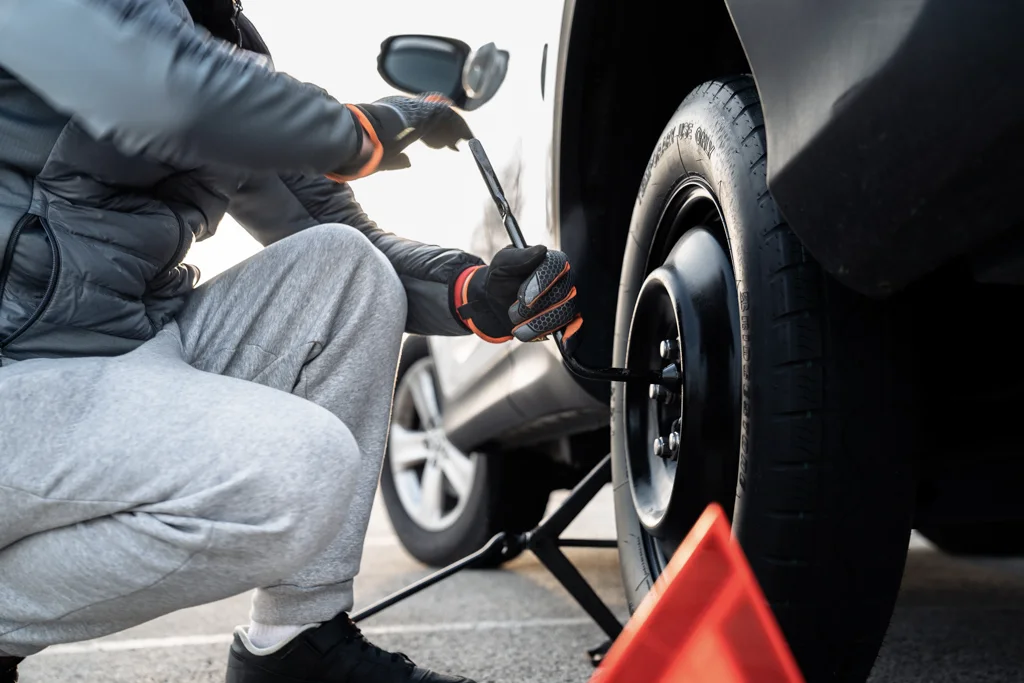
Step 21. Completely lower the vehicle to the ground
With the car jack, bring the car entirely to the ground. Remove the jack. Double-check the tightness of the lug nuts.
Step 22. Put the hub cap back on
If you’ve previously removed the hub cap, bring it back on. If it doesn’t fit a new tire, store it safely.
Step. 23. Clean the space up and store the tools
Almost there! Well done! Make sure you haven’t forgotten anything and safely stowed your tools.
Step 24. Check the spare tire air pressure
Make sure that the spare tire pressure is safe to drive. The recommended PSI for spares is around 60 psi.
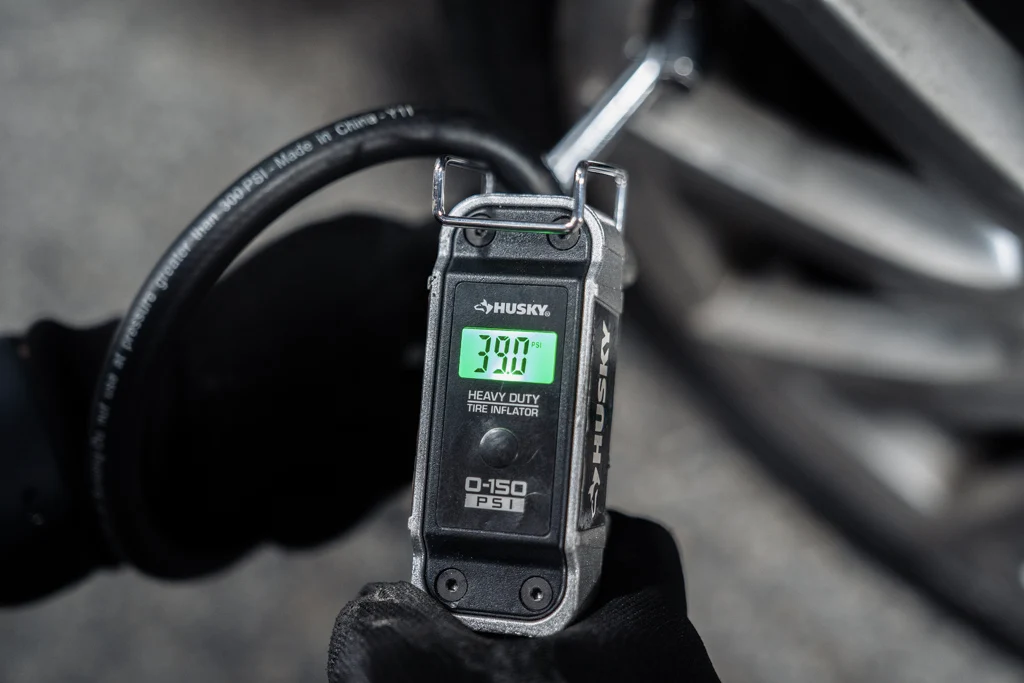
Step 25. Take a flat tire to a tire shop
Remember that spare tires aren’t meant to drive long distances. Take your flat tire to the tire shop that you trust and either get it repaired or replaced. For the latter, we offer you a wide variety of options to choose from. Get your new tire at GoTire and get free delivery to your location.
How to avoid getting a flat tire? GoTire technician’s tips
- Perform regular maintenance of your tires. We advise a visual inspection before every drive.
- Check the air pressure of your tires and add air regularly. You can do it at pretty much any gas station
- Avoid worn tires: always double-check the tread wear. Use the quarter test to see how worn your tires are. If the wear comes closer to 3/32″, it’s time for new tires
- Watch your driving patterns: aggressive braking leads to a fast tire wear
- Choose the right tires for your driving conditions. Remember that specialized rubber, like performance tires, wears faster.
- Buy tires only in reputable tire shops.
- Choose your tire technicians carefully and stick to the good guys if you’ve found them!
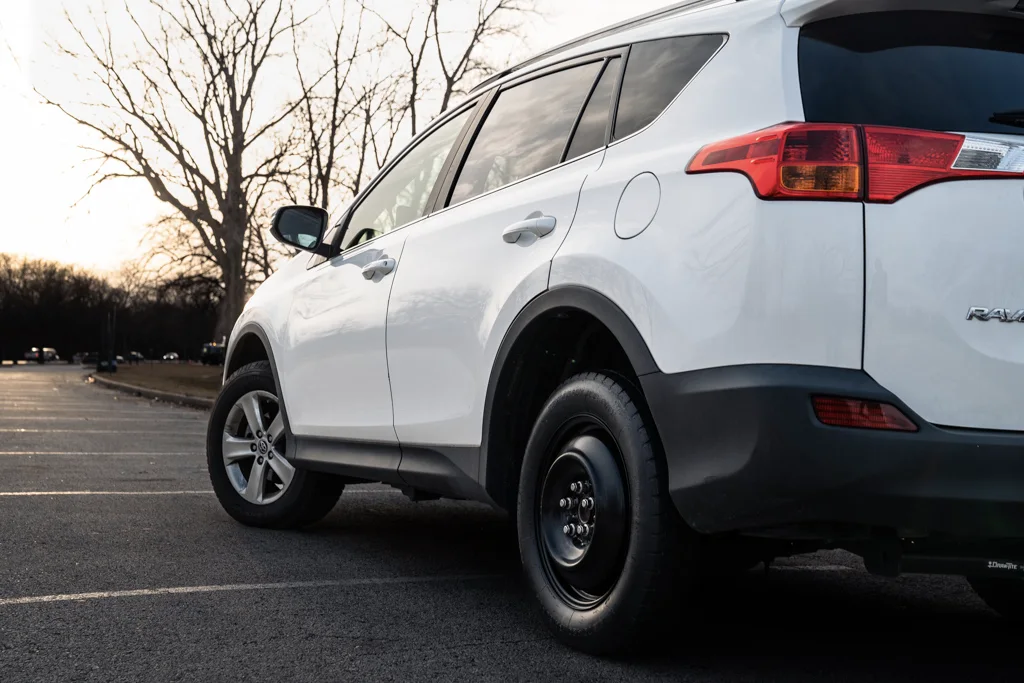
Frequently Asked Questions
How long does it take to change a flat tire?
It takes around 30 minutes. If you’ve mastered this necessary skill, you might be able to change a tire in 15 minutes or so. And if you are a beginner, a flat tire replacement might eat up an hour of your time and even more.
Do I need to change a flat tire immediately?
Yes. It is highly unsafe to drive on a flat tire. You must mount the spare tire immediately or take your car to the nearest service station.
Can I change a flat tire by myself?
Yes. It is highly unsafe to drive on a flat tire. You must mount the spare tire immediately or take your car to the nearest service station. But now, with this step-by-step Guide, we’re sure you won’t need that and will easily change a tire yourself!


